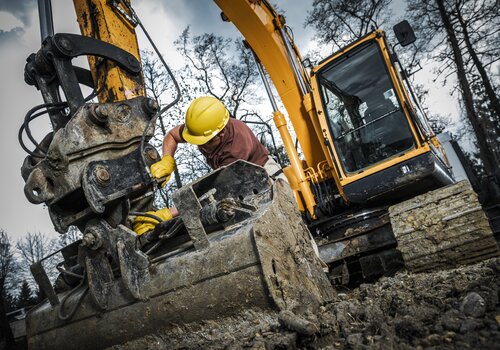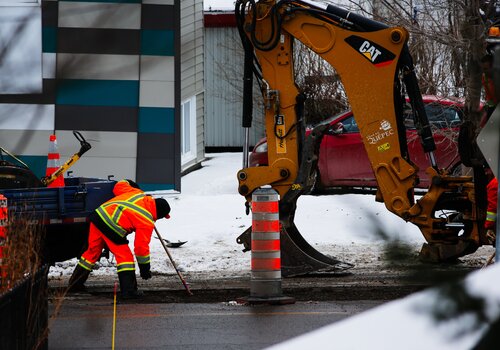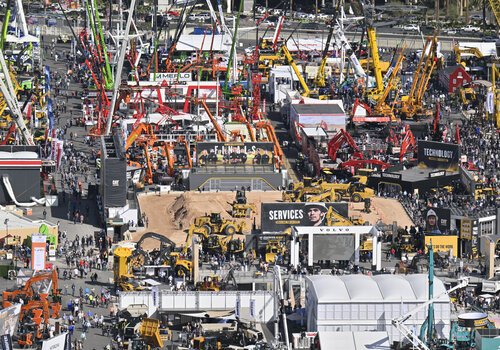As construction costs continue to rise and profit margins tighten, contractors are seeking innovative solutions to manage expenses and maintain competitiveness. One such solution gaining traction is the Equipment-as-a-Service (EaaS) model which shifts traditional equipment ownership to a service-based approach, significantly reducing operational costs while enhancing flexibility and efficiency.
UNDERSTANDING EAAS IN CONSTRUCTION
Equipment-as-a-Service is a business model where contractors pay for equipment usage on a subscription or pay-per-use basis, rather than purchasing and owning the equipment outright. This model often includes additional services such as maintenance, repairs and upgrades provided by the equipment supplier.
The global EaaS market was valued at approximately $1.5 billion in 2023 and is projected to grow at a compound annual growth rate of 53% from 2024 to 2030, reaching $27.8 billion by 2030.
BENEFITS OF EAAS FOR CONTRACTORS
• Reduced Capital Expenditure: Access equipment without the burden of large upfront purchases.
• Operational Flexibility: Scale usage up or down based on project needs.
• Maintenance and Upgrades Included: Providers handle servicing and tech updates.
• Improved Cash Flow Management: Convert CAPEX into predictable OPEX.
REAL-WORLD EXAMPLE
Volvo offers an EaaS model where customers purchase operating hours at a fixed hourly rate, rather than buying equipment outright. This approach provides access to the latest machinery without the responsibilities of ownership, including maintenance and repairs. Volvo manages the fleet and ensures equipment availability throughout the agreement, allowing contractors to scale usage based on project demands.
ACTIONABLE STEPS FOR CONTRACTORS
The EaaS model presents a compelling opportunity for construction contractors to reduce operational costs, enhance flexibility, and stay competitive. By assessing needs, choosing reliable partners and integrating new technologies, contractors can use EaaS to improve profitability and operational efficiency in today's evolving construction landscape.
Assess Current and Future Equipment Needs
Conduct a full inventory of your owned equipment. Identify underutilized assets and high maintenance machines. Forecast future project needs to determine what equipment could be more cost effective as a service rather than owned. Use data from past projects to identify machines with seasonal or infrequent use.
Analyze Total Cost of Ownership (TCO)
Calculate not just the purchase price but also maintenance, storage, depreciation, insurance and downtime costs. Compare these costs against available EaaS subscription or rental models. A detailed TCO comparison can make it easier to justify EaaS internally.
Choose the Right EaaS Provider
Prioritize providers with strong reputations, transparent pricing models and full-service agreements. Ask about real-time diagnostics and monitoring tools, upgrade cycles, support response times and contract exit terms. Pilot the service with a short-term or limited project before a full rollout.
Understand Contract Flexibility
Look for providers who offer month-to-month or project-based leasing, tiered pricing models, and add-on options like remote monitoring and training. Ensure the contract aligns with your project timelines and cash flow patterns.
Leverage Technology Integration
Choose equipment that comes with telematics, IoT sensors and integration capabilities with your project management software. Use dashboards to track fuel efficiency, machine health, location and utilization. This data can help with planning and reduce breakdowns.
Train Your Team
Conduct onboarding sessions for operators and project managers. Train them on logging hours, reporting issues and using analytics platforms. Encourage tech-savvy staff to become EaaS experts.
Regularly Review and Optimize
After each project, conduct a review. Were the right machines used? Was downtime minimized? Were the costs aligned with expectations? Use insights to refine future use.
CONSIDERATIONS
While EaaS models offer flexibility and reduced upfront costs, they also present several challenges that contractors should consider. Contractors should weigh these factors carefully to determine if EaaS aligns with their operational and financial objectives.
• Higher Long-Term Costs: Over time, subscription fees may surpass the total cost of owning equipment outright.
• Limited Customization: EaaS agreements often restrict modifications to equipment, potentially limiting its suitability for specific project needs.
• Provider Dependence: Reliance on third-party providers for maintenance and support can lead to operational disruptions if service levels are not met.
• Data Security Concerns: Utilizing connected equipment raises issues regarding data privacy and cybersecurity, especially if providers lack robust protections.
• Contractual Limitations: EaaS contracts may include usage caps, inflexible terms or penalties for early termination, which can hinder operational flexibility.
LOOKING AHEAD
The Equipment-as-a-Service model presents a compelling opportunity for construction contractors to reduce operational costs, enhance flexibility and stay competitive. By assessing needs, choosing reliable partners and integrating new technologies, contractors can use EaaS to improve profitability and operational efficiency in today's evolving construction landscape.
Photo credit: K-FK/SHUTTERSTOCK.COM












